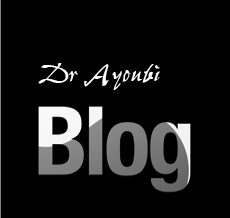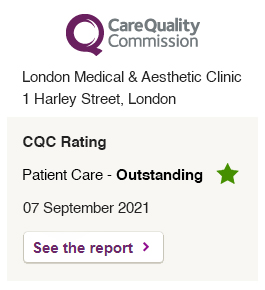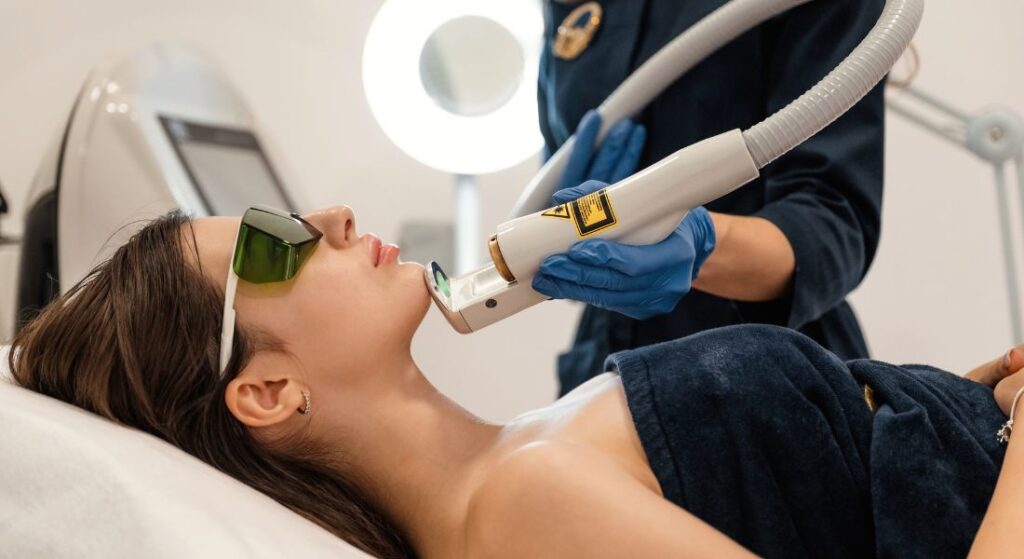
If you’re considering CO2 laser skin resurfacing, you’ve probably heard about its incredible ability to smooth fine lines, tighten skin, and reduce acne scars. It’s one of the most powerful non-surgical rejuvenation treatments available but patients often ask the same question:
“Will one session be enough to see results?”
The answer depends on your skin type, your goals, and the issue you’re treating. Some people notice dramatic changes after a single session, while others need a series of treatments to achieve their desired results.
In this guide, we’ll explain how CO2 laser works, what results to expect after one session, when multiple treatments are beneficial, and how to get the most out of your recovery.
Understanding How CO2 Laser Works
CO2 laser resurfacing uses a carbon dioxide laser beam to remove damaged outer skin layers and stimulate collagen regeneration in the deeper layers. It works by creating tiny, controlled micro-injuries across the skin, prompting the body’s natural healing response.
As your skin repairs itself, new collagen and elastin fibres form tightening the skin, improving tone, and smoothing texture.
There are two main types of CO2 laser:
Ablative CO2 lasers – These remove thin layers of skin for more dramatic results (ideal for deep wrinkles or scars).
Fractional CO2 lasers – These create microscopic columns of treated skin while leaving surrounding tissue intact, leading to faster healing.
Both types are effective, but the number of sessions you’ll need varies depending on which method your practitioner uses and your treatment goals.
What One Session of CO2 Laser Can Achieve
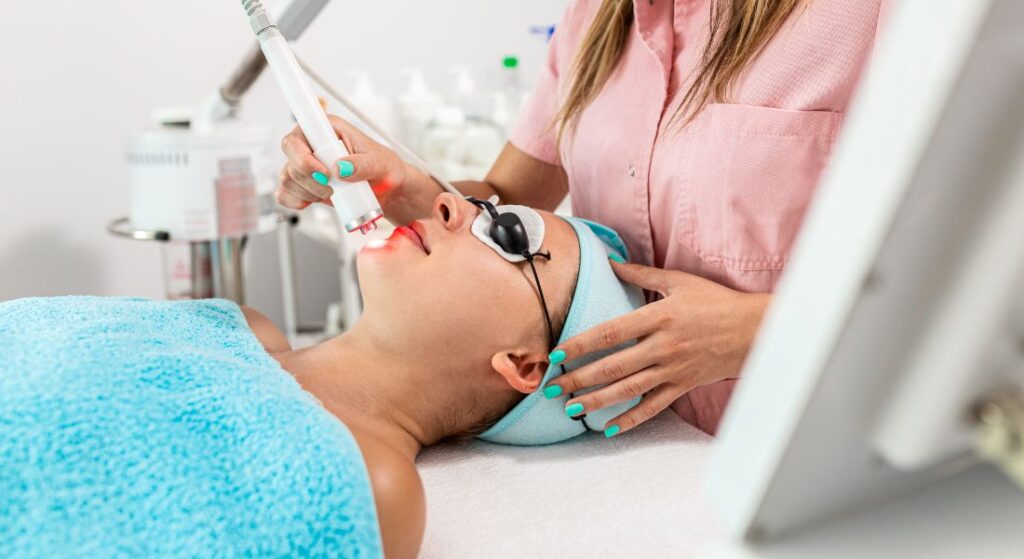
It’s completely possible to see visible improvement after one session, especially with ablative or fractional CO2 treatments. Most patients notice:
– Smoother and more even skin texture.
– Reduction in fine lines and wrinkles.
– Faded acne scars and pigmentation marks.
– Tighter, more youthful-looking skin.
– A general glow or “radiance” that develops over time.
However, the degree of improvement varies. Think of the first session as laying the foundation it triggers your skin’s healing and collagen-building process, which continues for several months afterward.
For some, one treatment gives the rejuvenation they were hoping for. For others, a series of sessions may be needed to refine the results further.
Factors That Affect How Many Sessions You’ll Need
Everyone’s skin is unique, and several factors determine whether a single session will be enough for you.
1. Your Skin Concerns
The more advanced or deep-seated your concern, the more sessions you’re likely to need.
– If you’re targeting fine lines or general dullness, one session is often enough to see a noticeable improvement.
– For mild acne scars, most people need around one to two sessions to smooth the skin’s texture.
– When it comes to deep wrinkles, two to three treatments are typically recommended for the best results.
– Those with severe acne scars usually benefit from a longer plan of three to five sessions to achieve smoother, more even skin.
– If you’re treating sun damage or uneven skin tone, one or two sessions are generally sufficient.
For mild to moderate signs of ageing, a single CO2 laser treatment can deliver impressive results. However, for deeper scars or texture irregularities that have built up over time, multiple sessions usually give a more consistent and refined outcome.
2. Your Skin Type
Fairer skin tones tend to respond more predictably to stronger CO2 settings, while darker skin tones may need gentler, fractional approaches to reduce the risk of pigmentation changes. This may mean smaller improvements per session but safer overall outcomes.
3. The Laser Settings Used
A more intense, full-field CO2 laser can deliver dramatic results in a single session but also comes with a longer downtime. Fractional CO2 lasers are gentler and safer, often requiring 2–3 sessions for full effect.
4. Age and Collagen Levels
Younger patients usually need fewer sessions as their skin heals and regenerates faster. Mature skin may require multiple treatments to rebuild collagen effectively.
5. Your Aftercare Routine
How you care for your skin post-treatment can make or break your results. Proper hydration, sun protection, and patience during healing all influence how well your skin responds.
Immediate Results vs Long-Term Benefits
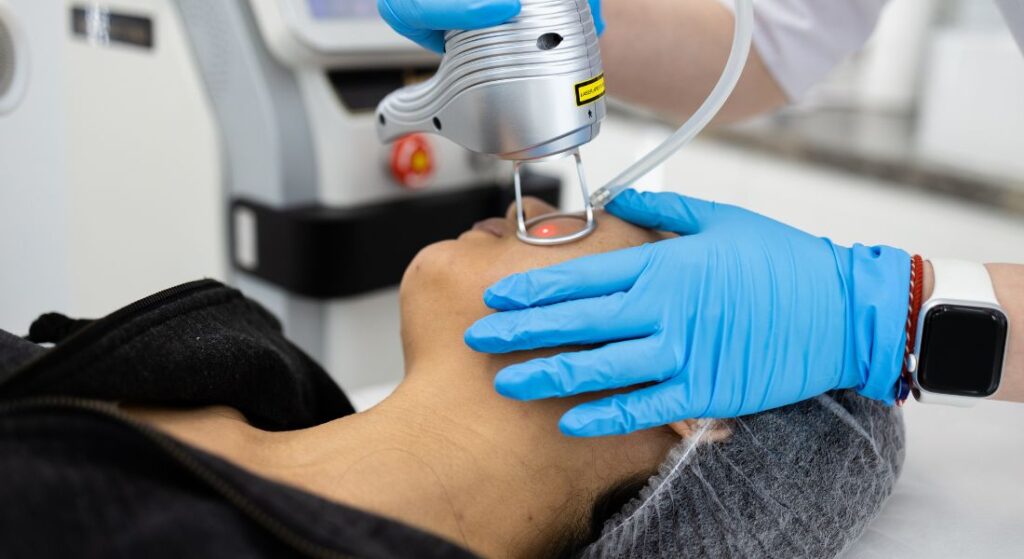
After one session, your skin will look refreshed once redness and peeling settle usually within 7–10 days.
However, the true results of CO2 laser develop gradually over time. This is because collagen production increases over the next 3–6 months, continuing to improve skin firmness and elasticity long after the visible healing is complete.
You can expect:
– Noticeable improvement after 2 weeks.
– More refined texture and tone after 1 month.
– Continued collagen boost for up to 6 months.
So, even one treatment continues working beneath the surface long after you’ve left the clinic.
When One Session Is Enough
For many patients, one carefully planned CO2 laser session delivers satisfying results especially if:
– You’re targeting mild fine lines, uneven tone, or early ageing signs.
– You’ve previously maintained your skin with other treatments.
– You’re undergoing full-field ablative CO2 resurfacing under expert supervision.
These patients often see smoother, brighter skin and lasting rejuvenation without needing repeat sessions for several years.
When You Might Need Multiple Sessions
If your main concern is acne scarring, deep wrinkles, or significant pigmentation, expect your doctor to recommend a course of 2–5 treatments, spaced several months apart.
This gradual approach allows the skin to heal safely between sessions while steadily building collagen and refining the surface.
Each subsequent session builds upon the previous one, enhancing both texture and elasticity for a natural, cumulative improvement.
CO2 Laser Strength vs Number of Sessions
Your practitioner will adjust the laser’s intensity based on your comfort level, skin type, and goals. Generally, the stronger the laser, the more dramatic the results but also the longer the recovery time.
If you go for a mild or fractional CO2 laser, the results tend to be more subtle and build gradually. You’ll usually need about two to four sessions, and the downtime is minimal around two to four days. This option works well for those who prefer a gentler approach or can’t take much time off for healing.
A moderate-strength treatment offers more noticeable improvement, often after just one or two sessions. However, it does require a bit more recovery time typically between five and seven days as your skin regenerates.
For those seeking a more dramatic transformation, a deep ablative laser is the most intensive option. It usually delivers visible, long-lasting results in a single session, but it comes with a longer healing period of about ten to fourteen days.
If you prefer minimal downtime, several gentler sessions can still get you to the same goal over time. But if you want faster, more dramatic results and don’t mind taking a bit longer to recover, a deeper treatment might be the right choice.
What to Expect After One Session
Immediately after treatment, your skin may feel warm and look red, similar to a sunburn. Swelling usually peaks within 24–48 hours and subsides within a few days.
During the next week, you’ll experience mild peeling or flaking as old skin sheds and new cells appear.
Most patients return to work after 5–7 days, depending on treatment intensity. By week two, redness softens, and your complexion looks fresher and smoother.
Can You Combine CO2 Laser with Other Treatments?
Absolutely in fact, combination therapy can enhance your results significantly.
Many patients pair CO2 laser resurfacing with:
– Microneedling or RF microneedling – for added collagen stimulation.
– Injectables – such as fillers or Sculptra to restore lost volume.
– PRP (Platelet-Rich Plasma) – to accelerate healing and improve glow.
– Chemical peels – for ongoing maintenance after recovery.
Your clinician can help design a bespoke plan to target multiple concerns effectively while keeping your skin’s health and safety the top priority.
How Long Do CO2 Laser Results Last?
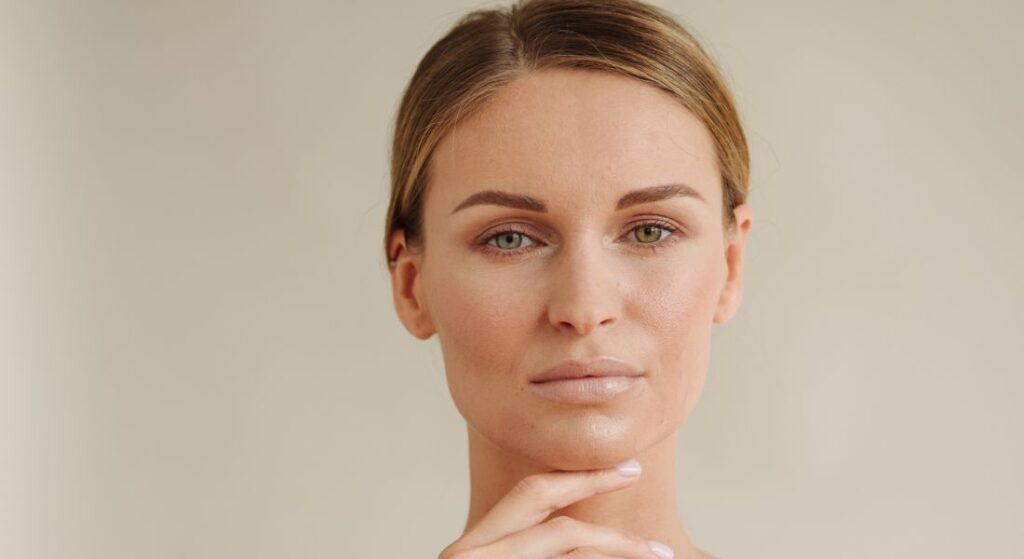
Results from a well-performed CO2 laser treatment can last 3–5 years, depending on your skin type, age, and lifestyle. For ongoing maintenance, some patients choose a lighter “touch-up” session every 12–24 months. Sun protection and a solid skincare routine help extend your results significantly.
The Importance of a Skilled Practitioner
CO2 laser resurfacing is a precision-based treatment. The outcome and how many sessions you need depends largely on the practitioner’s expertise.
An experienced aesthetic doctor will:
– Assess your skin type and tone carefully.
– Customise settings to your exact needs.
– Balance power with safety to avoid complications.
– Guide you through effective aftercare for optimal healing.
At LMA Clinic, all procedures are carried out by qualified aesthetic specialists who tailor each session to your goals and skin’s tolerance, ensuring safe, beautiful, and long-lasting results.
Realistic Expectations: It’s About Progress, Not Perfection
CO2 laser is one of the most powerful tools for skin renewal but it’s not a magic eraser.
One session can dramatically reduce visible imperfections, but total perfection (especially for deep scars or severe sun damage) may require patience and multiple sessions.
What matters most is progressive improvement each treatment boosts collagen and strengthens your skin from within, leading to healthier, more youthful results over time.
Comparing CO2 Laser to Other Treatments
When it comes to skin rejuvenation, there are several effective options but each works differently and comes with its own treatment schedule and recovery time.
A CO2 laser treatment is the go-to for deep resurfacing, targeting wrinkles, acne scars, and significant texture concerns. Most people need between one and three sessions, and recovery can take anywhere from five to fourteen days, depending on how intensive the treatment is.
Microneedling, on the other hand, focuses on stimulating collagen and improving surface texture. It’s a gentler option but usually requires three to six sessions to build results gradually. Downtime is short typically just one to two days.
If you’re mainly looking to improve tone and pigmentation, a chemical peel can help. These treatments usually need three to five sessions, with about two to four days of mild peeling or redness afterward.
Then there’s RF microneedling, which combines radiofrequency energy with microneedling to tighten and contour the skin. You can expect around three to four sessions, and the recovery time is usually two to three days.
While microneedling or chemical peels deliver subtle, progressive improvements, CO2 laser treatments offer more dramatic results in fewer sessions making them ideal for those seeking deeper rejuvenation and visible transformation.
Maximising Results After Your Session
Here’s how to support your skin after CO2 laser and ensure long-term success:
1. Follow your clinic’s aftercare instructions. Avoid harsh products, retinoids, and exfoliants until your skin fully heals.
2. Keep your skin hydrated. Use gentle, fragrance-free moisturisers to support recovery.
3. Protect against the sun. Wear SPF 30 or higher daily, even indoors.
4. Avoid picking or peeling. Let flaking skin shed naturally.
5.Stay patient. Remember that full results develop gradually over months, not days.
The Role of Patience and Consistency
Remember that CO2 laser isn’t about instant gratification it’s about long-term rejuvenation.
Even if one session brings visible results, collagen continues to rebuild for months, refining and firming the skin subtly and naturally.
With proper aftercare and possibly a tailored treatment plan, you’ll see improvements not just in how your skin looks but also in how resilient and healthy it feels.
Frequently Asked Questions About CO2 Laser Treatments:
1. How soon will I see results after my first CO2 laser session?
Most people start noticing visible changes within one to two weeks as redness fades and new, healthier skin appears. However, the real transformation happens gradually over the next three to six months as collagen production increases. Your skin will continue to firm up and smooth out during this time, giving a natural, long-lasting improvement rather than an overnight change.
2. Does CO2 laser treatment hurt?
CO2 laser resurfacing can feel slightly uncomfortable, but it shouldn’t be painful. Your practitioner will apply a topical anaesthetic to numb the area before treatment. During the procedure, you may feel warmth or a mild stinging sensation as the laser pulses. Afterward, your skin can feel sunburned for a day or two, but this typically settles quickly as healing begins.
3. How long does it take to recover after CO2 laser treatment?
Downtime varies depending on the strength of the laser used. Fractional treatments generally take three to five days for redness and flaking to subside, while deeper ablative procedures may require up to two weeks of recovery. During this time, keeping the skin moisturised and protected from the sun is crucial to ensure smooth healing and avoid pigmentation changes.
4. Can CO2 laser remove acne scars completely?
CO2 laser treatment can significantly improve acne scars by smoothing skin texture and encouraging new collagen formation, but it may not eliminate every mark entirely. Deep or long-standing scars often require multiple sessions to achieve optimal results. Each treatment builds on the previous one, softening scars progressively for a noticeably more even complexion.
5. Is CO2 laser safe for darker skin tones?
Yes, but with extra care. Darker skin tones are more prone to post-inflammatory pigmentation, so practitioners usually use gentler fractional settings or lower energy levels. Pre- and post-treatment skincare is also tailored to reduce pigmentation risks. With an experienced clinician and proper preparation, CO2 laser can safely and effectively rejuvenate deeper skin tones.
6. How do I know if I’m a good candidate for CO2 laser resurfacing?
You may be a good candidate if you have wrinkles, acne scars, uneven tone, or sun damage and want to achieve smoother, firmer skin without surgery. However, it’s not suitable for everyone. People with very sensitive skin, active acne, or certain medical conditions may be advised to wait or explore alternative treatments. A consultation helps determine whether CO2 laser is right for your skin type and goals.
7. What are the possible side effects?
Temporary redness, swelling, and flaking are the most common side effects and typically resolve within a week or two. Some people may experience mild itching or tightness as the skin heals. Rarely, improper aftercare or overly aggressive treatment can lead to prolonged redness or pigmentation changes. Choosing a qualified practitioner and following aftercare guidelines greatly reduces these risks.
8. Can I wear makeup after CO2 laser treatment?
You should avoid makeup until your skin has fully healed, which usually takes around seven to ten days for most fractional treatments. Once the surface has re-epithelialised and any flaking has stopped, you can return to light, mineral-based makeup. It’s best to use gentle, non-comedogenic products that won’t clog pores or irritate freshly treated skin.
9. How long do the results last, and do I need maintenance sessions?
Results from CO2 laser resurfacing can last three to five years, sometimes even longer, depending on your lifestyle and skincare habits. Many patients schedule maintenance treatments every year or two to preserve their results and keep collagen levels strong. Consistent sun protection, good hydration, and a quality skincare routine will also help extend the longevity of your results.
10. Can CO2 laser be combined with other aesthetic treatments?
Yes in fact, combining CO2 laser with other treatments often enhances outcomes. Procedures like microneedling, PRP therapy, or injectable fillers can complement laser resurfacing beautifully by addressing different layers of the skin. Typically, your practitioner will recommend waiting until your skin has fully recovered before adding another treatment, ensuring the best possible synergy and safety.
Final Thoughts: Achieving the Best Results from Your CO2 Laser Journey
Deciding whether one CO2 laser session is enough ultimately depends on your individual skin needs, goals, and how your skin responds to treatment. While some patients notice remarkable results after a single session, others benefit from a carefully planned series that builds gradual, long-lasting rejuvenation. What matters most is working with a skilled aesthetic practitioner who understands how to balance intensity, safety, and precision for your unique skin type.
At the London Medical & Aesthetic Clinic, every treatment is tailored to you ensuring that your CO2 laser experience delivers visible, natural improvements without compromising comfort or safety. Whether you’re targeting wrinkles, acne scars, or dullness, our specialists will design a personalised plan that helps you achieve the healthiest and most radiant version of your skin. If you’re thinking about CO2 laser treatment in London, you can book a consultation with Dr Ayham Al-Ayoubi at the London Medical & Aesthetic Clinic to discuss your goals and receive a personalised treatment plan.
References:
1. Yumeen, S. & Khan, T. (2023) ‘Laser Carbon Dioxide Resurfacing’, StatPearls [Internet]. Available at: https://www.ncbi.nlm.nih.gov/books/NBK560544/
2. Belletti, S., Madeddu, F., Brando, A., Provenzano, E., Nisticò, S. P., Fusco, I. & Bennardo, L. (2024) ‘Laser Impacts on Skin Rejuvenation: The Use of a Synergistic Emission of CO₂ and 1540 nm Wavelengths’, Medicina, 59(10), p.1857. Available at: https://www.mdpi.com/1648-9144/59/10/1857
3. Heidari Beigvand, H., Razzaghi, M., Rostami-Nejad, M., Rezaei-Tavirani, M., Safari, S., Rezaei-Tavirani, M. & Mansouri, V. (2020) ‘Assessment of Laser Effects on Skin Rejuvenation’, Journal of Lasers in Medical Sciences, 11(2), pp. 212-219. Available at: https://www.ncbi.nlm.nih.gov/pmc/articles/PMC7118506/
4. Fitzpatrick, R.E., Goldman, M.P., Satur, N.M. & Tope, W.D. (1996) ‘Pulsed carbon dioxide laser resurfacing of photo-aged facial skin’, Archives of Dermatology, 132(4), pp. 395-402. Available at: https://jamanetwork.com/journals/jamadermatology/fullarticle/189500
5. Tierney, E.P. & Hanke, C.W. (2009) ‘Outcomes of Fractional CO₂ Laser Application in Aesthetic Surgery’, Aesthetic Plastic Surgery, 33(6), pp. 845-849. Available at: https://pubmed.ncbi.nlm.nih.gov/21131460/

